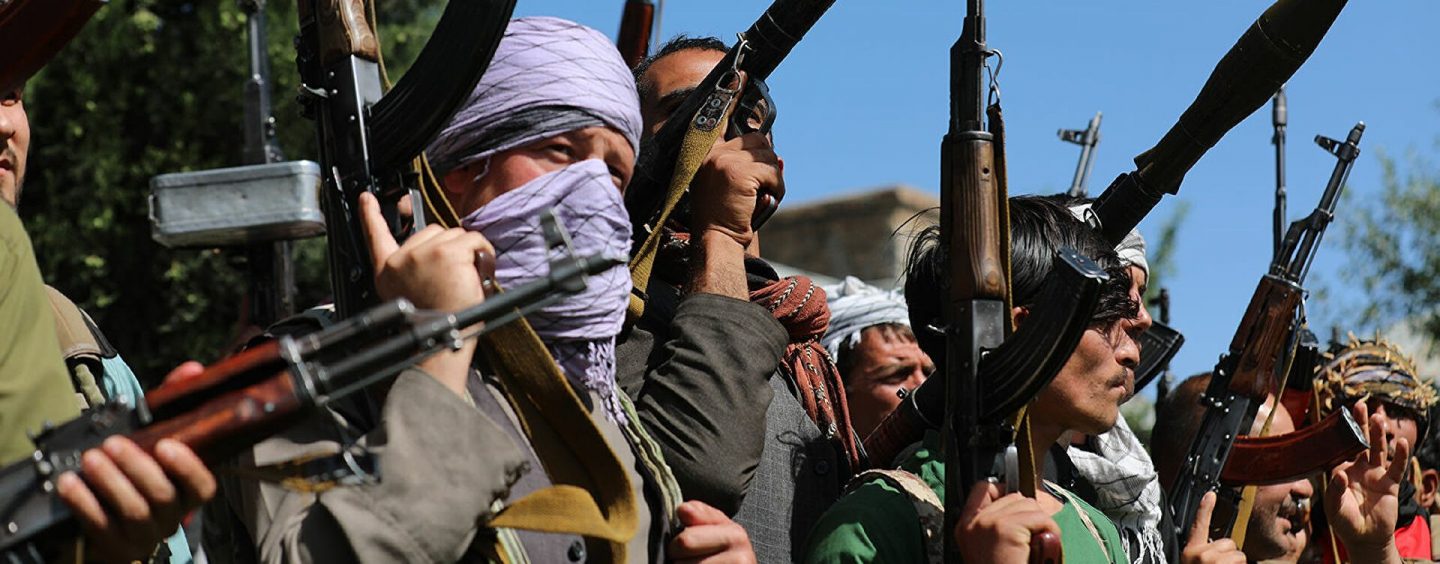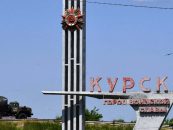
Afghanistan New Destination at Prompt Geopolitical Transition – From Regional Stability Toward Geoeconomic Development
By Professor Vakhtang Maisaia, Ph.D. in politics and military science Caucasus International University (CIU)
Afghanistan is engulfing in geopolitical stability case and “Taliban” transitional government is seeking to achieve the stability and confront with radical jihadist entities. Unexpected turmoil launched in Afghanistan since August 2021 when the NATO/USA Coalition Forces left the country and Afghanistan previous national government led by President Ashraf Ghani failed and derailed with zero game ends up has been causing great instability spots at regional and global levels. Despite of the fact that “Taliban” whilst seized the power and took complete control over the country is reinforcing its potential and begin to compose new governmental structures and making all efforts to obtain international recognition there are many challenges, including military, political and geopolitical origins leading toward sparking great instability rim around the Central Asia-South Asia space. These challenges linked with inefficient ruling steps portrayed by “Taliban” interim government led by Prime-minister Mullah Abdul Ghani Baradar in period of 100 days are incorporating the following concrete ones:
- Unrestricted terrorist group activation chaired by the DAESH and its reinforcement truly undermined the regional security in Central Asia and enshrined the threat to further on directions – to western one – the Caucasus-Caspian and Black Sea Regions, to eastern – South Asia. According to the USA intelligence community forecast in one year the DAESH could really gain full combat capability and capacity to exploit Afghanistan as a core-stone for flattering its global terrorist activities. Either the local criminal gangs high intense activities reflected in arms and heroin smuggling also steam up the disorder opportunity;
- Illegal migration flows stemming from unflatter Afghanistan turmoil could seriously endanger global security provisions. At time being, at least 3 million refugees from the country traced from Iran toward Turkey and could easily revolt stability climate in South, Central and Eastern European territories. The flow has also caused serious tensions between Afghanistan and Pakistan with at least 2 million refugees sheltered in Pakistan soil;
- Famine nightmare entrance steadily in the country with possible seasonal disaster scenario of severe winter season entrance could also drastically deteriorate social and economic conditions in the country. Pakistan’s $29 million charity allocation is not a way of solution and the great powers, including the USA, Russian Federation, China’s People Republic and the EU are not hasting to provide to Afghanistan with immediate humanitarian assistance to cope with the disastrous challenge. In a day in Kabul eight children died of hunger and the trend is fortifying and could reach with unpredictable figures;
- Human right violation tendency, including broken up female, child and ethnic minority rights, inspired by the “Taliban” interim government causing de-legitimation of its status quo and brokered international recognition process not only from the western community (USA, Canada, EU, Australia, etc.) but also refrained positions from the Russia, Iran, China, Turkey and even Pakistan;
- Inter-fractional and inside clans’ clashes and military confrontation among “Herat”, “Kabul” and “Kandahar” ones are also degenerating interim government legitimacy and governance efficiency of “Taliban” ruling movement.
All of the above-concerns and challenges has been outlined and underpinned in Final Declaration of Tehran Summit on Afghanistan with involvement of Iran, Russia, Uzbekistan, Tajikistan, Turkmenistan, China, Pakistan and “Taliban” delegation. Despite of the pessimistic scenario, Afghanistan with its interim “Taliban” government has unique opportunity to gain positive results in economic and financial benefits and the perception is being utilized promptly. As it is known main sources of the “Taliban” interim government financial sources are the following:
- The “Taliban” collects a 20 percent tax from opium dealers and transporters—money that goes straight to the Taliban war chest. The Northern Alliance imposes a similar tax on opium shipments crossing into Uzbekistan and Tajikistan. Drug dealers operate the only banking system in the country—offering farmers credit in advance of their poppy crop. This criminalized economy has weakened states throughout the region.
- The “Taliban” movement also receives money from extracting raw materials, including precious stones, like lazurite (lapis lazuli), silver, black emerald (key resource of Afghanistan) and gold – “Taliban” only extracts and develop in Badakshan province at least 40 kilogram of gold per day;
- The “Taliban” will be uphold to weapon system market segment and starts to put on purchase more than $150 billion in total armament of all kind including Soviet, American, European, etc. – only in Kandahar “Taliban” seized old-Soviet abundant armament stockpiles left by the Soviet 40th Army in 1989 valued roughly in $50 million. Eventhough “Taliban” requested officially from Uzbekistan returns more than 46 Air Forces entities together with its pilots and even threaten to Uzbekistan government to exercise military power in case of rejection of the proposal. The “Taliban” share in weapon international market could be considerable at least in “Southern” countries. On the high possible scenario directly indicated by ex-Intelligence Service of Saudi Arabia prince Turki ibn-Faisal al Saudi who blamed the American side for that inconsistency policy implications and labeled as “unprofessionalism”;
- The “Taliban” interim government launches first and initial implications to Turkmenistan government on launching so-called “TAPI” energy security project – gas pipeline: Turkmenistan-Afghanistan-Pakistan-India that is valued in $10 billion and aims delivering 33 billion cubic meter of Turkmen gas in South Asia during 30 years via Great and Kandahar and Pakistan port Quetta and Multan till city Fazilka in western India. The project is really enhancive and could really reinforce Taliban-controlled economic situation and partially conduct gasification of the country that also stimulating national economy at least 4% of GDP growth;
- Meanwhile, the smuggling of consumer goods, fuel, and foodstuffs through Afghanistan is wreaking further havoc. The contraband trade developed in the 1950s, when Pakistan granted landlocked Afghanistan the right to import duty-free goods through the port of Karachi under the Afghan Transit Trade Agreement (ATTA). Many of these imported goods were resold in Pakistani bazaars, but with the opening of Central Asia and Iran and the arrival of the Taliban in 1994, this trade has expanded enormously. Today Afghan and Pakistani truckers smuggle goods across a huge swath of territory that includes Russia, the Caucasus, Central Asia, Iran, and Pakistan. ATTA was worth only $50 million in the 1980s, but it increased to $128 million in 1992-93 and then jumped to $266 million in 1994-95—the first year of Taliban conquests. A 1999 World Bank study estimates that the smuggling trade between Pakistan and Afghanistan alone amounted to $2.5 billion in 1997, equivalent to more than half of Afghanistan’s estimated GDP. Add to that the smuggling to and from the rest of the region and the total rises to $5 billion;
- The “Taliban” expects receive financial assistance and aid from their friendly wealthier countries, namely from Qatar, UAE, Oman, even from Turkey and Pakistan as well as from China and partially from Russia. The Afghanistan case and “Talibanization” of the country promoted restoration political and diplomatic relations between UAE and Turkey. It was hold direct telephone dialogue between President of Turkey Receb Erdogan and Prince of UAE Muhammad ben Zaid.
In addition to that Afghanistan has several oil reserves in the north and of strategic minerals in the south, its main value is given by its geopolitical situation; Afghanistan becomes a transit place for the energy resources coming from Iran and Turkmenistan to Pakistan, India, and even China. Iran has the second most important gas reserves in the world and Turkmenistan is in the fourth place. The creation of oil and gas pipelines by Afghanistan to Pakistan and India would increase the output of energy resources to Central Asia and Iran, a fact that would favor nearly all countries in the area. However this possibility would affect the Russian politics which tries to control, as much as possible the gas distribution in Europe and Asia. The company UNOCAL (Union Oil of California), of which Hamid Karzai, ex-President of Afghanistan (2001-2009), was a consultant, planned the construction of a gas pipeline that would go from Turkmenistan to Afghanistan through Herat and would cross Kandahar until Pakistan through Multan. This project is known as TAP for the countries’ acronyms. In July 2001, the enterprise established negotiations with the “Taliban” interim government. This is opportunity “Taliban” decides to utilize and launch with concrete project submission with Turkmenistan.





